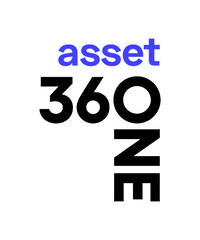List of All Mutual Fund Companies
Explore and compare different Asset Management Companies (AMCs)

Taurus Asset Management Company Limited

Franklin Templeton Asset Management (India) Private Limited

PPFAS Asset Management Pvt. Ltd.

Sundaram Asset Management Company Ltd

Tata Asset Management Limited

Union Asset Management Company Private Limited

HDFC Asset Management Company Limited

Aditya Birla Sun Life AMC Limited

ITI Asset Management Limited
Invesco Asset Management (India) Private Limited

Mirae Asset Investment Managers (India) Pvt. Ltd

360 ONE Asset Management Limited (Formerly known as IIFL Asset Management Limited)

JM Financial Asset Management Limited

LIC Mutual Fund Asset Management Limited

UTI Asset Mgmt. Co. Ltd.

Motilal Oswal Asset Management Company Limited
Navi AMC Limited

SBI Funds Management Limited

Nippon Life India Asset Management Limited

PGIM India Asset Management Private Limited

quant Money Managers Limited

Axis Asset Management Co. Ltd.

Bank of India Investment Managers Private Limited

Quantum Asset Management Company Private Limited

WhiteOak Capital Asset Management Limited

DSP Asset Managers Private Limited

Canara Robeco Asset Management Company Limited

Baroda BNP Paribas Asset Management India Private Limited

HSBC Asset Management (India) Private Ltd.

Kotak Mahindra Asset Management Company Limited

NJ Asset Management Private Limited

Groww Asset Management Limited

Trust Asset Management Private Limited

Samco Mutual Fund

Bandhan AMC Limited

Edelweiss Asset Management Limited

Mahindra Manulife Investment Management Pvt Ltd

Shriram Asset Management Co. Ltd.

ICICI Prudential Asset Management Company Limited
A Comprehensive Review of Asset Management Companies in India
Mutual funds have witnessed record-breaking inflows in recent years. These funds typically offer a viable and rewarding alternative to investors looking for higher returns than bank fixed deposits and government investment instruments. Whether you are a risk-taker or a risk-averse investor, there is always a mutual fund scheme to care for your needs.
Mutual fund schemes are managed by mutual fund houses, also known as AMCs or Asset Management Companies. There are over forty (40) registered asset management firms of varying sizes in India. AMFI data shows that the Indian mutual fund industry's total Asset Under Management (AUM) has increased from INR 6.75 trillion in February 2012 to INR 37.56 trillion in February 2022, registering a stellar growth of over 500% in ten (10) years. Also, the total number of folios (investor accounts) stands at 126.1 million or 12.61 crores.
What is an Asset Management Company?
An Asset Management Company (AMC) is a financial institution managing clients' money. They collect funds through various channels, such as online (through net banking, credit/debit cards, UPI, etc.) and offline (through cheques and cash). While mutual fund investors, such as banks, offer online access to mutual fund schemes managed by AMCs, empanelled distributors provide offline access to such schemes. AMCs launch New Fund Offers or NFOs to collect money from investors.
Asset management companies are run by seasoned and trained investment managers with many years of experience in the financial industry. Mutual fund schemes managed by AMCs invest in a wide range of financial instruments, including equity stocks, corporate bonds, government securities, money market instruments, certificates of deposit, commercial papers, treasury bills, commodities like gold, index derivatives like futures and options, and even other mutual funds.
An AMC generally collects funds from four types of investors - retail individual investors, corporate houses, foreign institutional investors, and high net worth investors. In addition, some governmental organizations also invest in Indian mutual funds. Because an AMCs primary task is to collect funds from investors and invest them in high-return financial instruments, they are also referred to as money management firms or money management companies.
Indian asset management companies offer two types of fund options – mutual funds and Exchange-Traded Funds (ETFs). Investors do not need a Demat and trading account to invest in mutual funds. However, Demat and trading accounts are mandatory for investing in ETFs. Besides mutual fund schemes, asset management firms also offer Alternative Investment Funds (AIFs), Real Estate Investment Trusts (REITs), and Portfolio Management Services (PMS).
Indian asset management companies abide by the rules of the Securities and Exchange Board of India (SEBI). SEBI is the top authority in India overseeing capital market and mutual fund investments. If the country's SEB issues notices to mutual fund houses failing to fulfill the regulations laid by it, investors can also lodge a complaint with SEBI if they feel that a mutual fund house does not address their concerns.
Mutual fund schemes offered by asset management companies are popular among investors primarily for three reasons:
- It allows investors to earn decent returns without actively participating in the capital market.
- Investors can conveniently enter into and exit from the funds (except for closed-ended funds).
- When investors want to invest in stocks, they have to deposit a minimum investment amount and open Demat and trading accounts.
In contrast, there is no need to create a special account since the money gets deducted automatically from the investor's bank account. Similarly, the capital plus profits are transferred to the investor's bank account when they redeem their investments.
So, you know what an asset management company is. Let us now understand how an AMC gets the money to work efficiently.
Where Do Asset Management Companies Get The Money From to Work Efficiently?
Asset management firms charge a fee (Expense Ratio) from investors when they invest with AMCs. The fee is usually a fixed percentage of the investor's total capital. Although the fee is calculated on a yearly basis, it is deducted from the account every month. So if a scheme has an expense ratio of 1% and your total investment amount is INR 1 lakh, the AMC will deduct about INR 83 every month or INR 1,000 a year. However, the calculation is far from this simple. Since fund value is dynamic and not static, the expense ratio is levied on the actual and not the average fund value.
The fund value is directly linked to an AMC's profitability. If an investor's fund value increases, the AMC gets more money as the expense ratio. However, the AMC gets less money if the client's fund value decreases. So, an AMC's profitability is directly associated with investor prosperity. As a fact, the more prosperous the investors, the more profitable an AMC is.
The expense ratio helps asset management firms hire the best mutual fund managers and pay staff salaries. The money also enables them to manage their establishment and stay operational. Some AMCs launch an IPO (Initial Public Offering) to get additional funds for business expansion or debt consolidation.
How Do Asset Management Companies Function?
The primary purpose of an asset management company is to manage and monitor mutual fund schemes. They also manage AIFs, PMS, REITs, and the like. An AMC needs the approval of SEBI and the Ministry of Finance before collecting funds from the public.
A mutual fund is established as a trust with financial sponsors (typically controlled/registered) and the AMC. One or more sponsors set up the trust who act as the mutual fund's promoter. When investors invest money in a mutual fund scheme, the funds are held by the trustees. The AMC oversees the fund management process by selecting top-class investment instruments and investing the pooled funds. According to SEBI regulations, at least two-thirds of the trustee company's directors and 50% of the AMC's directors must be independent and not directly associated with sponsors.
After investors pour money into a mutual fund scheme, the funds are managed by trained mutual fund managers. Generally, AMCs have the following four types of fund managers:
- Equity Fund Managers Equity fund managers analyze and evaluate the growth prospects of equity stocks. They invest in large-cap, mid-cap, and small-cap stocks as per a scheme's investment objectives. Usually, equity fund managers keep between 30% and 35% of a fund's total AUM in cash and cash-equivalent instruments to fulfill redemption requests.
- Debt Fund Managers Debt fund managers specialize in debt and fixed-income instruments like government securities, corporate bonds, debentures, certificates of deposit, commercial papers, and other money market instruments. Debt fund managers have to deliver stable returns even when the market is volatile.
- Commodities Fund Managers Commodities fund managers evaluate the prices of commodities like gold and silver to identify investment opportunities. The funds managed by these managers provide a viable alternative to physical gold investments. Commodities-oriented mutual funds usually perform well when the equity market tumbles.
- Passive Fund Managers Passive fund managers oversee investments in securities that are a part of a benchmark index. These fund managers simply replicate the structure and composition of the benchmark index and do not apply their good judgement to increase (or decrease) the returns. Hence, if the benchmark index increases, the fund value grows and vice versa.